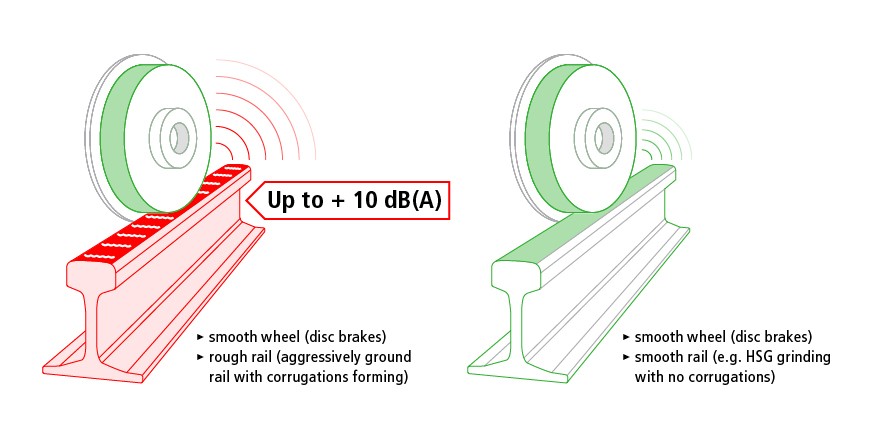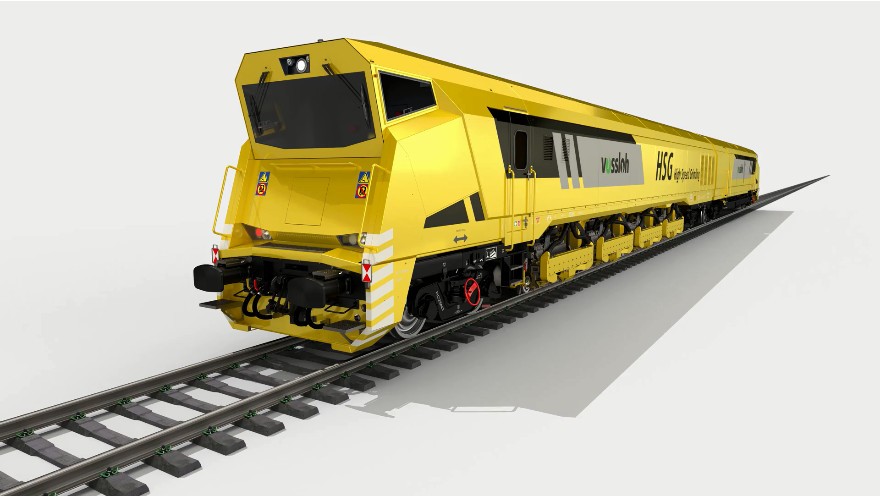Quiet and comfortable – One of the main sources of rail noise is the rolling sound emitted by the wheels. The more corrugations or slip waves there are on the rail surface, the more noise is generated. This can even lead to annoyingly high-pitched squealing noises in the worst cases. High Speed Grinding smoothens out the rail, optimizing the wheel-rail contact and reducing the rail surface roughness that produces noise. Preventive rail maintenance using the HSG-2 improves rail acoustics considerably by up to 10 decibels. This results in distinctly quieter rail traffic, and the squealing sound typically heard after rails have been newly ground is also noticeably absent. And not only that: the machining itself is comparatively quiet, which in turn significantly minimizes the stress for passengers and residents in the area.



